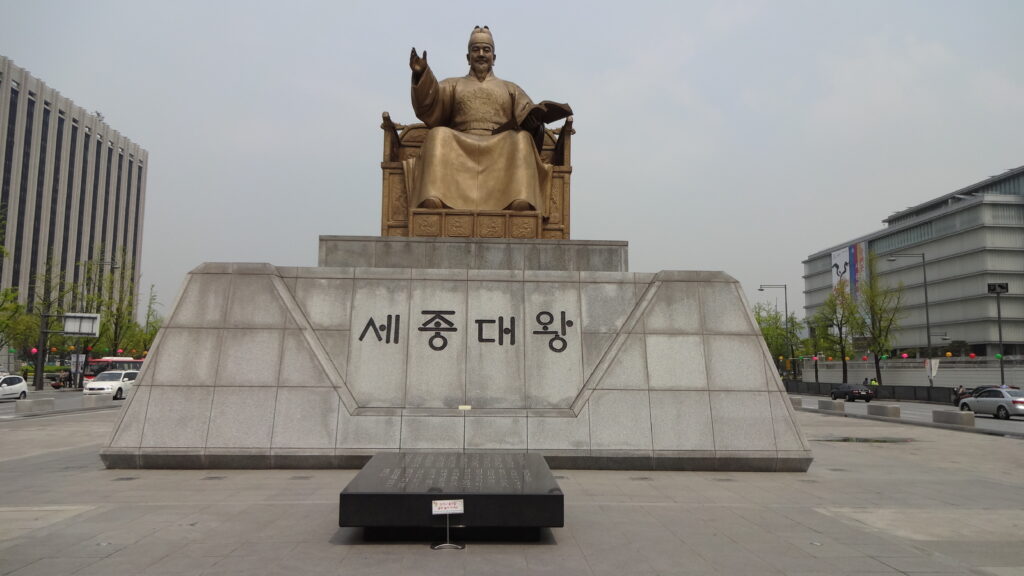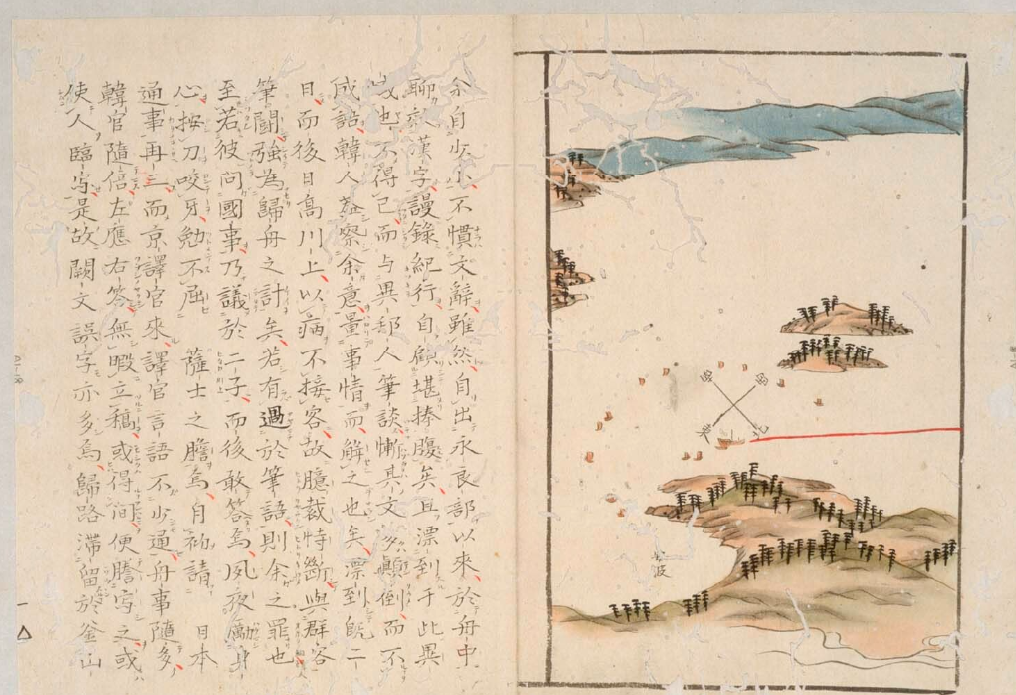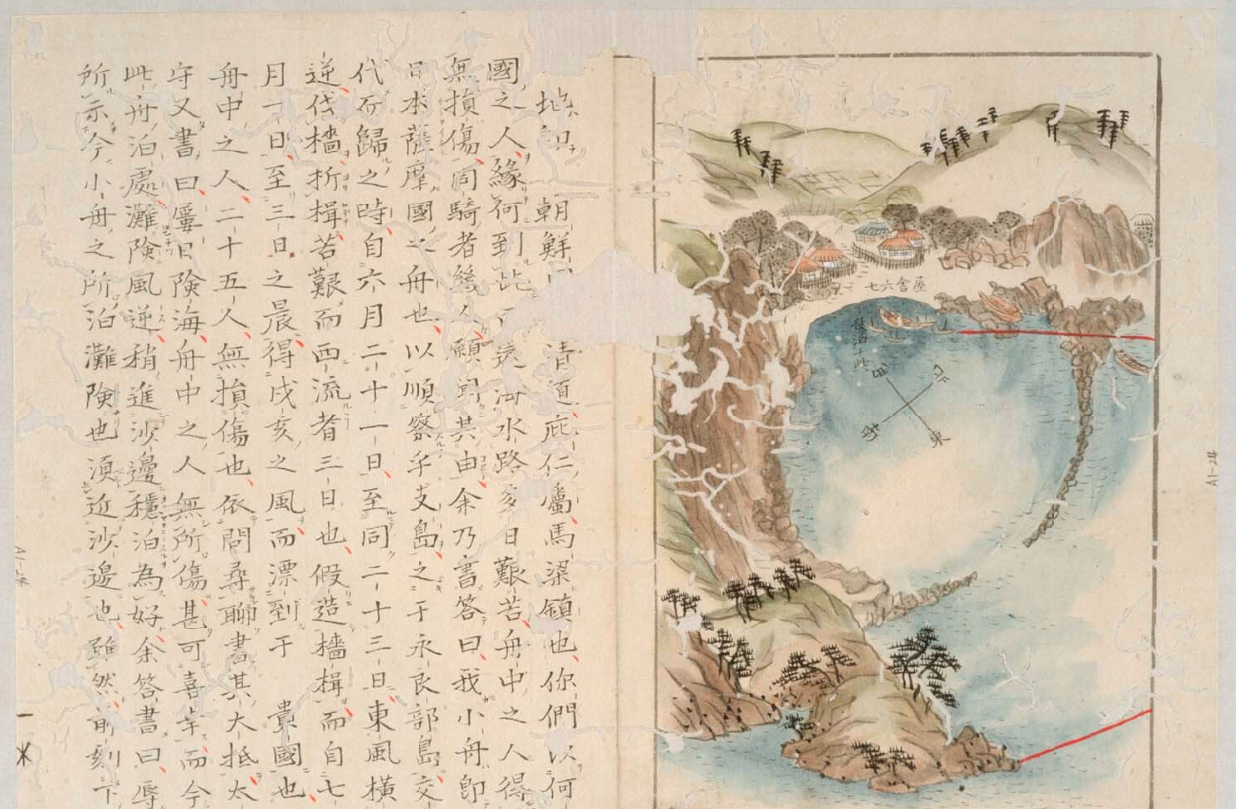
Korean music such as BTS is gaining popularity around the world. On the other hand, did you know that Korea does not have good relations with its neighbor, Japan? Korean music groups come to Japan and play wonderful songs, and the Japanese love them, but when the topic turns to relations between the countries, both Japanese and Koreans instantly turn against each other.
There are many reasons for this, including Japan’s annexation of Korea in 1910 and Toyotomi Hideyoshi’s two invasions of Korea beginning in 1592 (the Bunroku and Keicho wars). The “Story of King Sejong and Prince Chungmugong,” a museum in the basement of the statue of King Sejong the Great in Seoul, explains Toyotomi Hideyoshi’s invasions in great detail. Toyotomi Hideyoshi is a strong and popular military commander who unified Japan, which may anger some Japanese.
The historical document presented here is a diary written by Yasuda Yoshikata (安田義方), a Japanese samurai who was lost during a voyage in 1819 and drifted ashore on the Korean peninsula. It describes the interaction between Yasuda Yoshikata and the Korean officials who rescued his crew, as well as the events leading up to his return to Japan. What is interesting about this historical document is that in the period about 200 years after the invasion by Hideyoshi Toyotomi, the rapport between Japanese and Koreans was not as bad as expected, and the importance of Classical Chinese language as a method of communication among the people of that time. Let’s read a bit of “Korea Drifting Diary”.

Yasuda Yoshikata and Takagi Motoatsu, ed. Korea Drifting Diary (朝鮮漂流日記), 1824. (holding institution: Kobe University Library, Sumida Bunko)
I have been unaccustomed to writing since I was young. And yet, it is a funny story when I think back on it, because I learned a few Chinese characters (kanji 漢字) and wrote down travelogues on the ship after we left Erabu Island (永良部島). Besides, I drifted into a foreign country. I had no choice but to communicate with foreigners in writing. Embarrassingly, I wrote the word order backwards and the sentence didn’t make sense, but I believe that the Koreans were able to understand my thoughts and understand what was going on. Two days have already passed, and since Hidaka (日高) and Kawakami (川上) are ill and unable to respond, I have to think and decide alone, fight them in writing and return home at any cost. If there is any error in the words I write, it will be my sin.
(Classical Chinese: 余自少小、不慣文辞。雖然、自出永良部以来、於舟中聊倣漢字、謾録紀行、自顧堪捧腹矣。且漂到于此異域也。不得已、而与異邦人筆談、慚其文多顛倒、而不成語、韓人蓋察余意、量事情而解之也矣。既二日、而後日高川上、以病不接客、故臆裁特断、与群客筆闘強為帰舟之計矣。若有過於筆語、則余之罪也。)
As the above document shows, Yasuda unexpectedly arrived in Korea in distress and needed help from the local people to return to Japan. However, the Japanese and Koreans, who were neighbors but spoke completely different languages, were unable to communicate with each other. Therefore, Yasuda attempted to converse with them in Kanbun (漢文), the classical Chinese language.
At that time, China was an advanced and admired country for Japan, and since the Chinese system and culture were modeled after China’s, Japanese intellectuals studied the Confucian scriptures of China and acquired a good knowledge of Kanbun. The same was true in Korea. In short, Kanbun was the common language of pre-modern East Asia.
Yasuda was not good at Kanbun, but nevertheless, Yasuda explained to Korean officials through written communication in Kanbun that he had drifted ashore from Japan, and negotiated with them to help him return to Japan. As a result, not only were Yasuda and his crew able to return to Japan, but through the exchange of Kanbun, Yasuda became friends with Yun Young-gyu (尹永圭) and other Korean officials.
The importance of Kanbun in East Asia, the relationship between Japan and Korea after the invasion by Toyotomi Hideyoshi, and the differences in customs between Japan and Korea make the “Korea Drifting Diary” a very interesting historical document that provides various perspectives on East Asia in the early modern period. Although the “Korea Drifting Diary” is written in Kanbun, a book summarizing its contents in an easy-to-understand manner has also been published. If you want to know the real history of Japan and Korea, rather than just the hateful information on the Internet, I highly recommend reading this book.
References
Satoshi Ikeuchi. Satsuma Clan Warriors’ Diary of Drifting in Korea: Negotiations between Japan and Korea Beyond ‘Seclusion’. Kodansha, 2009.


Coment